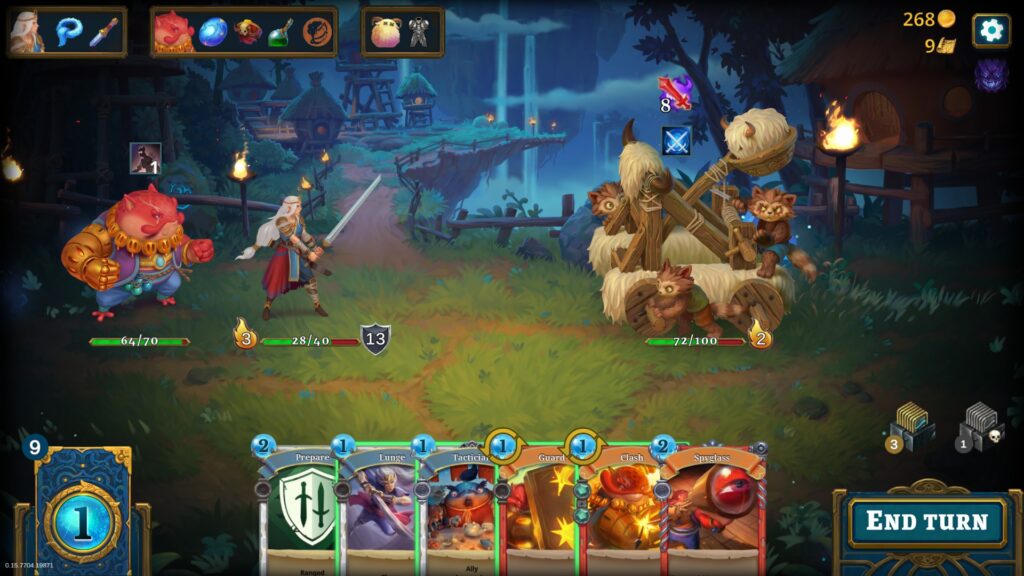
Roguebook is an upcoming deckbuilding roguelite by Abrakam, the developers of the digital CCG Faeria from 2017. I checked out a very early prototype way back in July 2019, when the game was still raising funds on Kickstarter.
It was recently announced that the game will finally be coming out on June 24th, and it’s currently participating in the Steam Game Festival. The developers were kind enough to send us a newer demo, so here’s my initial impressions after playing through a few runs with the current build.
The success of Slay the Spire helped kickstart the idea of the roguelite deckbuilder subgenre, leading to a tidal wave of copycats and imitators since its release. Like most roguelite deckbuilders, Roguebook consists of exploring a series of regions to collect new cards, artifacts, and other buffs to prepare you for the level’s boss; with the ultimate goal of trying to complete a full run.
While Roguebook‘s core gameplay and formula are extremely familiar to anyone who has played Slay the Spire, it features a lot of interesting ideas and mechanics that set itself apart from the horde of imitators chasing after a piece of the deckbuilder pie.

Roguebook is set in the same whimsical fairytale world as Faeria, and while it’s a different type of card game than Abrakam’s earlier title, it features a few ideas from it. One of the main gimmicks of Faeria that set itself apart from other digital CCGs was the playing area.
Each game started with a blank area, and players gradually construct a landmass of hex-shaped grids to form a pathway to their enemy so they could attack them directly. This concept carries over to Roguebook, to a certain degree.
The map is divided into a hex-based grid, but almost all of it is essentially a blank page. There is a pathway to the boss unlocked from the start, but you won’t be anywhere near prepared if you just go straight for them.
To explore the map, you need to use brushes and inkpots, two finite resources that you can get more of through events and battles. Brushes reveal a large area around your character, while inkpots have variable effects. These can include revealing a line of three to five hexes in front of you, or even letting you project a brush further to reveal a much larger chunk of the map. The map is also littered with vision towers that you’ll want to build paths towards to activate.
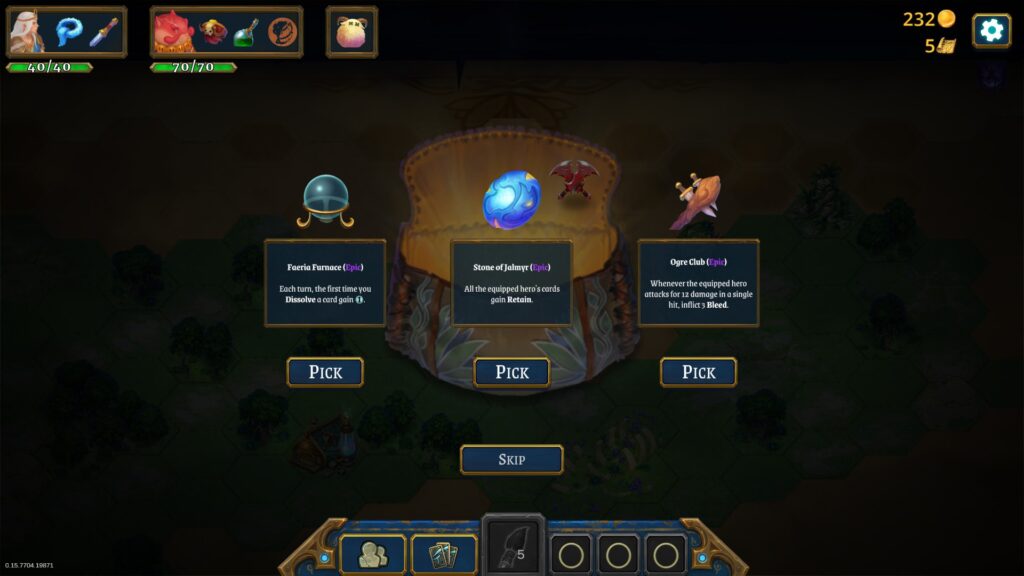
This adds a really interesting dynamic to map exploration that isn’t really in other deckbuilding roguelites. You will need to carefully manage your brushes and inkpots because you’ll eventually run out of them, and must carefully consider what parts of the map you reveal in search of the battles and events you need to power up your deck.
As for what you’ll find on the map; it’s mostly battles, buildings where you can draft new cards, alchemists that allow you to transmute cards into different cards, gold that you can spend at the vendor at the start of every level, health pickups, and powerful artifacts that grant passive bonuses.
There are also pages, which tie into the game’s meta progression system. This will allow you to buy permanent buffs from a branching tech tree, though this system isn’t really implemented at the moment.
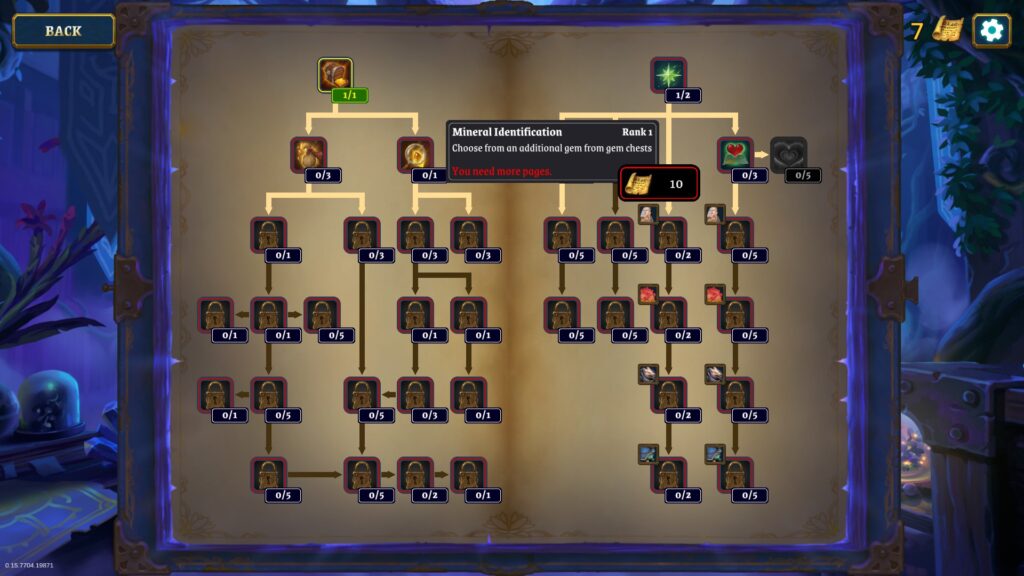
The other thing that sets Roguebook apart from its peers is that you control two characters. The game will launch with four, though only one pair is playable in the current demo. Each character has a set of starting cards that form your deck, as well as a starting artifact. While some of the artifacts you find will benefit both characters at once, some must be equipped, meaning they’ll only affect that character.
Another interesting idea is that your pairing determines some passive buffs you’ll have access to. When your deck hits certain milestones, you’ll be able to pick one of three passives. Two are determined by the individual characters, while the third option is determined by the pairing you brought.
Besides just adding new cards to your deck from the potential card pools of each character, you can also customize cards with gems. Much like in most action-RPGs, each card will have a specific number of sockets that you can insert gems into.
These gems will add additional effects to the card, and range from small boosts like making the card give you more Blocking power, to huge effects like tripling the amount of damage it does.
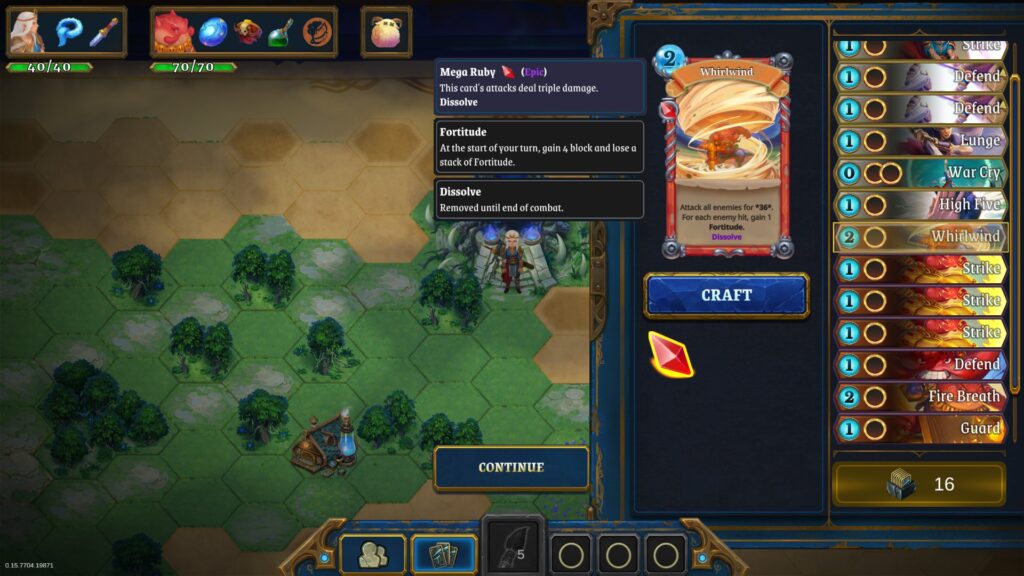
Once you do get into a battle, Roguebook plays pretty much exactly like Slay the Spire. Each turn, you’ll draw a new hand and you have three mana to play with to cast your cards. Your enemies always telegraph their next move, allowing you to figure out when to turtle up by playing a bunch of Block cards, and when to dump tons of attacks into them.
The two character system is the biggest difference, and can dramatically alter your plans and builds. The lead character will take damage from attacks first, and there are tons of cards that have different effects based on if the caster is in the lead or behind. There are also cards that have bonus effects if the other character played the previous card.
While both characters share the same Block total, they have separate health bars. While there are lots of cards that allow characters to swap positions on the fly, the easiest way is to play a Block card associated with that character.
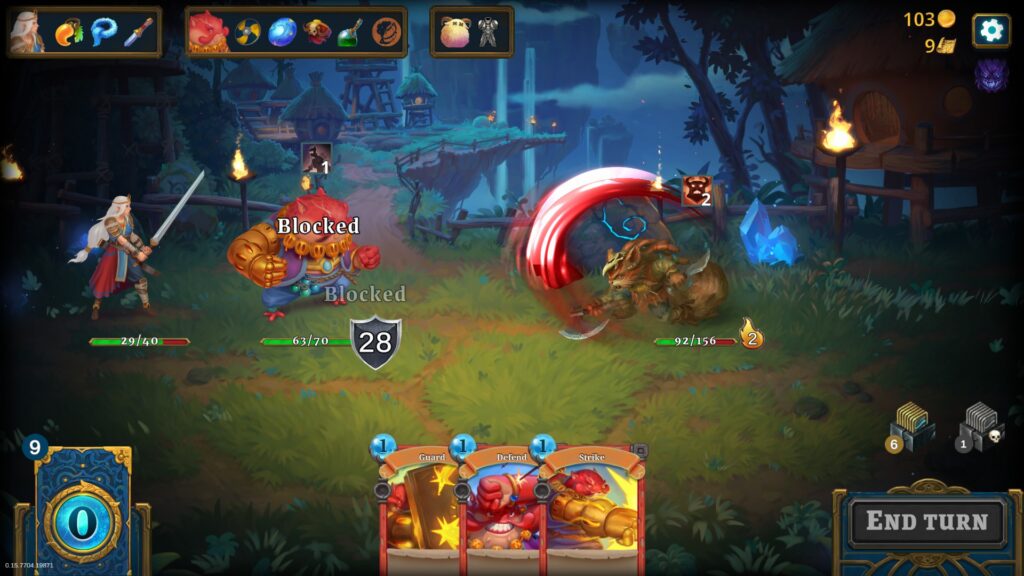
Should a character fall in battle, all of their cards become dead draws, but you’ll also gain several 1-cost revival cards. After you play five of these, the fallen character will be revived with a small portion of their health left.
While the core mechanics are almost identical to Slay the Spire, the character swapping (and the fact that you are drafting a deck from two card pools) adds a whole new dynamic to the strategies, combos, and deckbuilding options you have at your disposal.
If you love deckbuilding roguelites, then you’ll definitely want to keep an eye on Roguebook. You can try the demo out right now on Steam until the 9th. Preordering the game will give you extended access to the demo, as well as early access to the game 48 hours before its full release, and a free character skin pack.
Roguebook releases launches 24th for Windows PC (via Steam), with Nintendo Switch, PlayStation 4, and Xbox One versions later this year.
Roguebook was previewed on Windows PC using a preview copy provided by Nacon. You can find additional information about Niche Gamer’s review/ethics policy here.